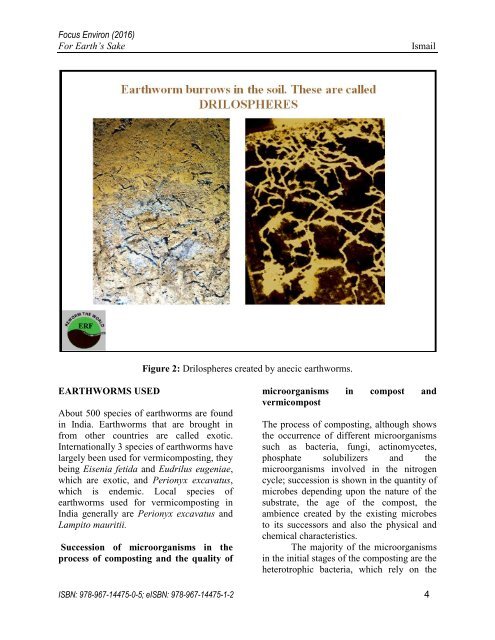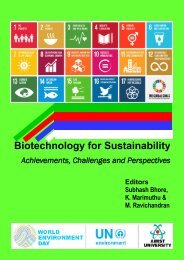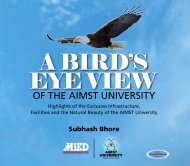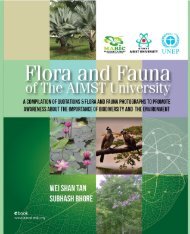Focus on Environment
This book is the Proceedings of the ‘National Seminar on Sustainable Environment and Health 2016’ & ‘World Environment Day-2016 (WED-2016)’ events held on the campus of AIMST University, Kedah, Malaysia. ISBN: 978-967-14475-0-5 (Print version); eISBN: 978-967-14475-1-2 (e-Book version) Editors Subhash Bhore & K. Marimuthu
This book is the Proceedings of the ‘National Seminar on Sustainable Environment and Health 2016’ & ‘World Environment Day-2016 (WED-2016)’ events held on the campus of AIMST University, Kedah, Malaysia.
ISBN: 978-967-14475-0-5 (Print version); eISBN: 978-967-14475-1-2 (e-Book version)
Editors
Subhash Bhore & K. Marimuthu
Create successful ePaper yourself
Turn your PDF publications into a flip-book with our unique Google optimized e-Paper software.
<str<strong>on</strong>g>Focus</str<strong>on</strong>g> Envir<strong>on</strong> (2016)<br />
For Earth’s Sake<br />
Ismail<br />
Figure 2: Drilospheres created by anecic earthworms.<br />
EARTHWORMS USED<br />
About 500 species of earthworms are found<br />
in India. Earthworms that are brought in<br />
from other countries are called exotic.<br />
Internati<strong>on</strong>ally 3 species of earthworms have<br />
largely been used for vermicomposting, they<br />
being Eisenia fetida and Eudrilus eugeniae,<br />
which are exotic, and Peri<strong>on</strong>yx excavatus,<br />
which is endemic. Local species of<br />
earthworms used for vermicomposting in<br />
India generally are Peri<strong>on</strong>yx excavatus and<br />
Lampito mauritii.<br />
Successi<strong>on</strong> of microorganisms in the<br />
process of composting and the quality of<br />
microorganisms in compost and<br />
vermicompost<br />
The process of composting, although shows<br />
the occurrence of different microorganisms<br />
such as bacteria, fungi, actinomycetes,<br />
phosphate solubilizers and the<br />
microorganisms involved in the nitrogen<br />
cycle; successi<strong>on</strong> is shown in the quantity of<br />
microbes depending up<strong>on</strong> the nature of the<br />
substrate, the age of the compost, the<br />
ambience created by the existing microbes<br />
to its successors and also the physical and<br />
chemical characteristics.<br />
The majority of the microorganisms<br />
in the initial stages of the composting are the<br />
heterotrophic bacteria, which rely <strong>on</strong> the<br />
ISBN: 978-967-14475-0-5; eISBN: 978-967-14475-1-2 4







